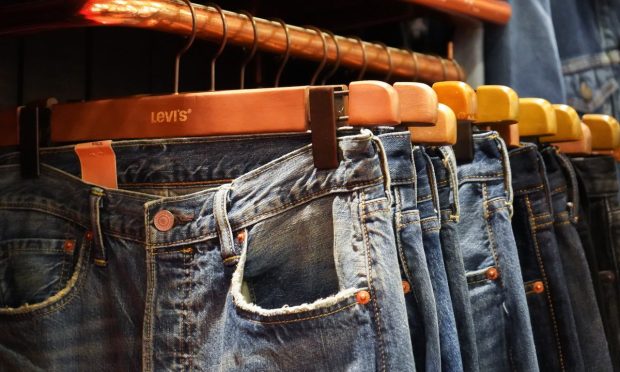Consumers Continue to Seek Refreshed Wardrobes, Boosting Levi Strauss Sales

Increased casualization and a need for new clothes are driving continued growth for apparel giant Levi Strauss & Co., with the company citing its diversified supply chain as helping it avoid the worst of the global supply chain crisis.
CEO Chip Bergh told investors and analysts on a conference call that denim growth outpaced total apparel for the second quarter in a row, with the total jeans category this year reaching $11.2 billion in the U.S., higher than it was in 2019, at $10.6 billion, and “way higher” than during the pandemic, at $8.5 billion.
“Clearly the category is bouncing as people need to refill their wardrobes, and that’s helping everybody,” Bergh said. “But I think the vast majority of our results are driven by the strategic choices that we’ve made.”
Officially, Levi Strauss recorded $1.5 billion in revenue in the third quarter, up 41% compared to the same period last year and up 3% versus 2019. Direct-to-consumer (D2C) sales were up 34% year-over-year and 4% on a two-year stack, while digital channels grew 10% versus 2020 and 76% compared to two years ago. Digital sales now represent approximately 20% of Levi Strauss’ total revenue.
Approximately 10% of company-operated stores were closed globally during the third quarter, primarily in Asia, which saw low traffic levels and approximately 20% of Levi Strauss stores, and a large portion of third-party retail locations, closed. Currently, about 4% of company-operated stores around the world remain closed.
Still, brick-and-mortar sales were up 1% compared to 2019, with strong growth and higher conversion in the Americas and Europe. Bergh said Levi Strauss is set to open 100 new stores this year, the majority of which will be “NextGen,” a concept introduced last year that includes more digital features, a tailor shop and redesigned fitting rooms in a smaller footprint.
Navigating Supply Chain Issues
Bergh said Levi Strauss has not been impacted by supply chain issues as much as others have because of the diversified sourcing strategy it committed to several years ago in which no more than 20% of merchandise would come from any one country. Levi Strauss currently spans 24 countries, which Bergh said helps the company “avoid concentrations and be less exposed to bottlenecks in production capacity like what’s going on currently.”
Last month, Nike told analysts that it had lost 10 weeks of production because of factory shutdowns primarily in Vietnam, which will delay the company’s holiday and spring merchandise. Some of Nike’s factory partners have had their reopening plans approved, but factories aren’t expected to begin restarting production until later this month.
Read more: Factory Closures Cause 10-Plus Weeks of Lost Production for Nike
Levi Strauss, on the other hand, sources less than 4% of its products from Vietnam. Bergh said the brand has also locked in approximately 70% of its ocean freight and costs through the summer of next year and it has already negotiated most of its product costs, including cotton, through the first half of 2022. Cotton prices recently hit a 10-year high, but Chief Financial Officer Hamit Singh said Levi Strauss has locked in only a 1% increase in prices versus 2021. For the second half of the year, the company is expecting to pay for a mid-single digit increase in cotton prices.
“If the inflation issues and/or cotton and/or cost of goods gets worse than what we’ve got built into our model right now, if we have to take on more pricing, we’ll figure out where and how to do that,” Bergh said.
Moving Into Athleisure
Bergh also highlighted Levi Strauss’ acquisition of athleisure brand Beyond Yoga, which closed at the end of September and moves the company into the premium activewear category. Over the past nine months, athleticwear has grown to a $50 billion category, five times larger than the total jeans category.
Related: Levi Strauss Enters Activewear As Consumers Crave Casualization And Comfort
“What we bring to the party, I think, is an ability to scale a brand and really bring great brand-building capabilities to bear,” Bergh said.
The CEO said he expects Levi Strauss to move Beyond Yoga into the men’s category and open new retail locations, “but we’re not going to go out really fast. We’re going to learn our way there.”
Additionally, Bergh noted that the Beyond Yoga acquisition helps Levi Strauss to diversify from both a product and consumer standpoint. Levi Strauss is aiming to have its women’s business encompass 50% of its total sales, and “this is clearly going to help there,” he said.
“I believe the combination of their category expertise, deep consumer understanding and outstanding product, with our expertise and capability in brand-building, retail operations … is a powerful combination,” Bergh said.
